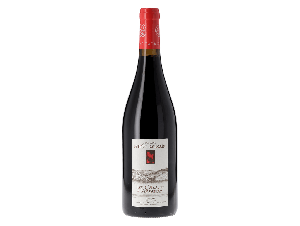You have no items in your shopping cart.
Wine Anjou
The AOC Anjou is a regional appellation that stretches from Ancenis to Saumur. This Loire appellation produces white, red and sparkling wines. Rosé wines are protected by the Cabernet d'Anjou and Rosé d'Anjou appellations. The wines are greedy, fruity and pleasurable, made mainly from Chenin, Cabernet Franc and Cabernet Sauvignon grapes. Read more on Anjou
-
Top Selling
-
Top Selling
-
Top Selling
- -17%
- -17%
- -17%
Appellation Anjou
Anjou wines have a worldwide reputation
The wine history of the Anjou region dates back to the 1st century AD. This vineyard continued to develop in the Middle Ages and those thanks to the monasteries strongly present on the banks of the Loire. From the 12th century onwards, the wines of the region acquired their fame thanks to the King of England, Henry II of Plantagenet, who served the "wine of Anjou" on the finest tables in England.
In the 16th century, the arrival of Dutch dressmakers gave a new impetus to the production of "Anjou wine". Indeed, the couturiers were looking for wines to transport to their country and their colonies. The trade quickly became so successful that the Layon River was channelled to facilitate its passage by the Dutch boats. In the 18th century, the economic growth of the "wines of Anjou" made people envious, and various taxes were created to hinder the trade. They will lead to the destruction of the wine trade which is not helped by the Vendée war and will thus lead to the destruction of the Anjou vineyard.
The discovery of sparkling wines dates back to the 15th century. Winegrowers observed that as a result of the rise in temperature after the Winter, the white wines then in bottle became sparkling. Despite this second fermentation the wines retain their aromatic quality. It was at the beginning of the 19th century that the mastery of this fermentation was developed, notably under the impetus of Jean Baptiste Ackerman, and thus gave rise to the sparkling wines that we know.
The AOC of Anjou is extensive and diversified
The AOC Anjou is spread over approximately 2400 ha between Ancenis, the south of Angers and Saumur. This regional appellation covers 70 communes in the Maine-et-Loire department, 14 communes in the Deux-Sèvres department and 9 communes in the Vienne department. The terroir of this appellation is mainly divided into two geological surfaces. To the east, it is the terroir of Anjou Blanc. The soils here are relatively clear due to Truffaut chalk and limestone from the sedimentary formations of the Paris basin.They are deep.
In fact, it is in the Truffaut chalk that the cellars for the conservation and maturing of wines are dug. To the west, the soils are schistose and originate from the formation of the Armorican massif. They are shallow and their dark colour earns them the name of Anjou Noir. Between these two geological delimitations, the soils are clayey-limestone, siliceous or sandy. The vineyards of Anjou are spread over the hillsides, plateaus and plains.
The temperate oceanic climate gives rise to small temperature differences. These climatic observations are linked to the proximity of the region to the Atlantic Ocean, the Loire and its tributaries which act as a thermal buffer. The relief of the Choletais and Mauges regions plays a protective role with regard to the moisture-producing westerly winds. This explains the relatively low rainfall with an average of 585 mm/year.
White wines are produced from Chenin with a blend that can go up to 20% of Chardonnay and/or Sauvignon. The Chenin grape variety at the origin of the great white wines of the Loire expresses itself fully on the hillsides. It is also the grape variety that is mainly used for the production of white sparkling wines.
The red wines are made from the grape varieties Cabernet Franc and Cabernet Sauvignon with a blend that can go up to 30% of Grolleau noir and Pineau d'Aunis.
Anjou wines offer a multitude of flavours
The white wines have a golden robe. The nose develops aromas of citrus, pear, dried fruit, honey and white flowers with occasional more mineral notes. The palate is rounded, full-bodied with freshness on the finish. The white wines have an aging potential of 3 years.
The white sparkling wines will present a golden colour. The nose develops notes of white flowers, peach, pear and sometimes dried fruit. The mouth is full and lively. They are drunk young.
Sparkling rosé wines have a pink colour. The nose presents aromas of red fruits with some floral notes. The mouth is ample and lively. They are consumed in their youth.
Red wines have a ruby colour. The nose presents aromas of red fruits with a floral note. The palate is structured, the tannins are fine and the finish is supported by a hint of acidity. These wines have an ageing potential of 3 years.
How to match the flavours of Anjou wines
The elegance and finesse of the white wines go well with lobster, scallops or Turbot. Their aromatic power and amplitude go well with poularde with morels or with a lamb tagine. Sparkling wines are pleasure wines that you can enjoy as an aperitif or at the end of a meal with fruity desserts.
The fruity notes of red wines give them a gourmand side that is very well suited to pairing with charcuterie. Their lightness and structure allow a pairing with white meat or steamed vegetables.
The fine vintages of AOC Anjou
The white wines have a beautiful aromatic expression on the 2001, 2005, 2007, 2008, 2009, 2014, 2015 and 2017 vintages. The red wines have a beautiful expression on the 2001, 2003, 2005, 2009, 2014, 2015, 2016, 2017 and 2018 vintages.
The great domains of Anjou
Patrick Baudouin
The Patrick Baudouin estate covers 13.5 hectares in "Anjou Noir". He practices organic farming, works the soil, makes the wine and accompanies it in its evolution. Nevertheless, he does not practise biodynamics for his own reasons. His wines reflect their origin and are great to keep.Le Clau de Nell
Le Clau de Nell is located in Tuffalun not far from Saumur. The 10 ha surface area is cultivated according to biodynamic principles, because for the manager as well as for the owners, "nature is essential and we must let it act". Several grape varieties are given pride of place, such as Grolleau, Cabernet Franc, Cabernet Sauvignon and Chenin. The wines are supple, elegant and characteristic of their terroir.
Vallée de la Loire appellations








































 TWIL - Achat de Vin
TWIL - Achat de Vin


